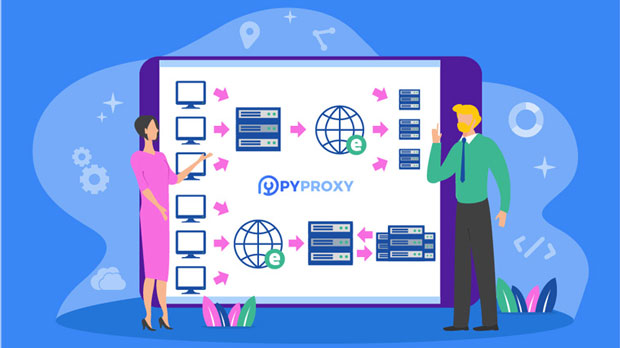When buying a SOCKS5 proxy, how can I tell if it has good IP quality?
When purchasing socks5 proxies, it's essential to assess the quality of the provided IPs, as this directly impacts their effectiveness and reliability. SOCKS5 proxies are widely used for their versatility, but not all of them offer the same performance, security, or anonymity. To ensure you’re getting value for your investment, there are several key factors to consider when evaluating IP quality. This article will delve into these factors, including speed, geographic location, anonymity levels, IP reputation, and reliability, among others, to help you make an informed decision when selecting your SOCKS5 proxies. 1. Speed and Latency: Core Indicators of IP QualitySpeed and latency are among the most critical factors when evaluating SOCKS5 proxies. Proxies with high latency or slow speeds will directly affect your online activities, whether it's browsing, streaming, or scraping data. A poor-performing IP can lead to frustrating delays and disrupted experiences.Speed Tests To assess the speed of the socks5 proxy, running real-time tests is a must. Various tools and software are available that help simulate the connection's speed under different conditions. Testing download speed, upload speed, and ping times can provide clear insights into how the proxy performs under normal use. Latency Latency refers to the time it takes for data to travel between your device and the proxy server. High-quality proxies should have minimal latency, especially for activities that require real-time communication or interaction, such as online gaming, video conferencing, or financial trading.2. Geographic Location: Relevance to Your NeedsThe geographic location of the socks5 proxy server plays a pivotal role in its performance and suitability for your needs. IP addresses located in specific regions or countries may be crucial for bypassing geographical restrictions or appearing as though you’re accessing the internet from a particular area. However, selecting proxies with the correct geographic location is more than just about bypassing geo-blocks.Proximity to Target Locations Choosing proxy ips that are located near your target audience or the service you're interacting with is essential for minimizing latency and ensuring faster connections. Proxies that are far away from the target can cause slower performance and higher latency, affecting the quality of your online experience.IP Location for Specific Use Cases If you're using SOCKS5 proxies for tasks such as SEO scraping or bypassing government censorship, consider the countries that are relevant for your needs. Certain regions may have stricter laws around proxy use or offer a limited number of usable IPs.3. Anonymity and Privacy: Ensuring Safe BrowsingWhen using SOCKS5 proxies, privacy and anonymity are vital, especially if you are engaging in sensitive or high-stakes online activities. Different proxies provide varying levels of anonymity, and this directly affects your level of security.Levels of Anonymity SOCKS5 proxies can either offer transparent, anonymous, or high-anonymity modes. The level of anonymity provided by the proxy server is crucial to ensure your real identity is not exposed to websites or third-party services. Transparent proxies pass along your real IP address, while high-anonymity SOCKS5 proxies hide your IP address completely, masking all personal information.Encryption and Security Features A high-quality SOCKS5 proxy should support encryption, even if it's not as robust as HTTPS or VPN encryption. Encryption ensures your data remains protected during transmission, mitigating the risks of data interception or misuse.4. IP Reputation and Blacklist StatusThe reputation of the IP addresses provided by the SOCKS5 proxy is one of the most important quality indicators. Proxies with poor reputations may be associated with spamming, cybercrime, or other malicious activities, leading to blacklisting and blocking by websites and services.Check for Blacklistings Before purchasing a SOCKS5 proxy, it’s critical to check if the proxy’s IPs are on any blacklist. Websites, email services, and even social media platforms regularly maintain IP blacklists. Being on a blacklist can prevent you from accessing certain services or performing essential tasks.Reputation Services Some tools can scan a proxy's IP reputation in real-time to identify whether it is listed in databases of suspicious activity. Using these services ensures that you’re purchasing IPs that haven’t been compromised by prior malicious activities.5. Reliability and Uptime: Maintaining ConsistencyReliability is another cornerstone of good IP quality. A reliable SOCKS5 proxy ensures that you have consistent access to the services you need without experiencing downtime or interruptions. The uptime of a proxy refers to the period during which it is operational and accessible.Testing for Uptime To evaluate the reliability of a SOCKS5 proxy, conduct tests that simulate continuous use over extended periods. Ideally, a proxy should have an uptime of at least 99%. Proxies that experience frequent downtimes are unreliable and can severely disrupt your online tasks.Redundancy Systems Good providers often offer redundant systems, meaning they have backup proxies or failover mechanisms in place. These systems prevent disruption in case one proxy goes down, ensuring you maintain a smooth and continuous experience.6. Bandwidth and Traffic LimitsThe bandwidth and traffic limits associated with a SOCKS5 proxy can heavily influence its performance. Some proxies come with fixed bandwidth caps, which can be restrictive, especially for data-intensive tasks like video streaming, file sharing, or scraping large amounts of data.Unlimited vs. Limited Bandwidth Proxies with unlimited bandwidth offer more flexibility, especially for users who need consistent high-speed access. However, be cautious of proxies offering too many connections, as this could degrade the overall speed.Traffic Caps and Throttling Some proxy services may impose throttling, limiting the speed once a certain data threshold is crossed. It’s essential to review these aspects before purchasing to ensure that the proxy meets your traffic needs.7. Customer Support and MaintenanceLastly, reliable customer support and regular maintenance are important aspects of choosing a high-quality SOCKS5 proxy. Proxies can encounter issues, whether technical glitches or configuration errors, and having access to responsive customer service ensures you don’t lose valuable time.Availability of Support Check for 24/7 customer support options, as this indicates a provider who is willing to assist with troubleshooting or concerns at any time. Reputable proxy services typically offer multiple communication channels, including email, live chat, and phone support.Regular Updates and Maintenance Top-tier SOCKS5 proxy providers perform regular maintenance and updates to ensure the proxies remain fast, secure, and reliable. This ongoing effort prevents proxies from becoming obsolete or vulnerable over time.ConclusionWhen purchasing SOCKS5 proxies, evaluating the IP quality is a critical step to ensure you’re making the right investment. Factors like speed, latency, anonymity, IP reputation, and reliability all contribute to the overall performance of the proxies. By thoroughly assessing these elements, you can ensure that the SOCKS5 proxies you purchase will serve your needs effectively, whether for secure browsing, data scraping, or bypassing geo-blocks. Taking the time to research and test these factors will ultimately provide you with a more dependable, secure, and high-performance proxy solution.
2025-02-19
























































